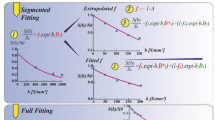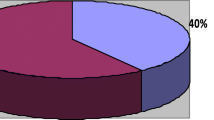Abstract
Apparent diffusion coefficient (ADC), derived from diffusion-weighted magnetic resonance images (DW-MRI), measures the motion of water molecules in vivo and can be used to quantify tumor response so as to determine the best therapy approach. In this paper, our goal was to determine whether the DW-MRI can be used for qualitative and quantitative liver cancer analysis, where an automated method will be proposed for improving the accuracy of liver segmentation in DW-MRI to increase the ability of diagnosis of disease. We firstly analyzed the research status of liver cancer diagnosis, especially on the issues of liver image segmentation technology in MRI. Then, the imaging mechanism and image features of the DW-MRI were analyzed, and the initial DW-MRI slice was segmented by graph-cut algorithm. Finally, our obtained result from the liver DW-MRI image is quantitatively and qualitatively analyzed. Experimental results show that DW-MRI has a great advantage in the diagnosis, the DWI images of benign lesion group was lower than that of malignant lesion, thus DW-MRI is segmented by graph-cut algorithm can provide important additional information regarding differential diagnosis of specific liver cancer to some extend.



Similar content being viewed by others
References
Christ P F, Ettlinger F, Felix Grün, et al. Automatic liver and tumor segmentation of CT and MRI volumes using cascaded fully convolutional neural networks[J]. 2017.
Raj, A., and Juluru, K., Visualization and segmentation of liver tumors using dynamic contrast MRI[J]. Conf Proc IEEE Eng Med Biol Soc 2009:6985–6989, 2009.
Marcan, M., Pavliha, D., Music, M. M. et al., Segmentation of hepatic vessels from MRI images for planning of electroporation-based treatments in the liver[J]. Radiol Oncol 48(3):267–281, 2014.
Raj, A., and Juluru, K., Visualization and segmentation of liver tumors using dynamic contrast MRI[C]// international conference of the IEEE engineering in Medicine & Biology Society. IEEE, 2009.
Goceri, E., Unlu, M. Z., Guzelis, C. et al., An automatic level set based liver segmentation from MRI data sets[C]// international conference on image processing theory. IEEE, 2013.
V. Vezhnevets and V. Konouchine, “GrowCut - Interative multi-label N-D image segmentation,” in Proceedings of Graphicon (Graphicon Scientifc Society, Novosibirsk, Russia, 2005), pp. 150–156.
K. H. Pohl, J. Fisher, J. J. Levitt, M. E. Shenton, R. Kikinis, W. E. L. Grimson, and W. M. Wells, “A unifying approach to registration, segmentation, and intensity correction,” in Proceedings of Medical Image Computing and Computer-Assisted Intervention (Palm Springs, FL, Springer, 2005), pp. 310–318.
F. Wang and B. C. Vemuri, “Simultaneous registration and segmentation of anatomical structures from brain MRI,” in Proceedings of Medical Image Computing and Computer-Assisted Intervention (Palm Springs, FL, Springer, 2005), pp. 17–25.
Manikis, G. C., Marias, K., Dmj, L. et al., Diffusion weighted imaging in patients with rectal cancer: Comparison between Gaussian and non-Gaussian models[J]. PLoS One 12(9):e0184197, 2017.
Huang, J., Luo, J., Peng, J. et al., Cerebral schistosomiasis: Diffusion-weighted imaging helps to differentiate from brain glioma and metastasis[J]. Acta Radiol:028418511668717, 2017.
Zhou, S., Yi, Y., and Xu, L., Comments on “Intravoxel incoherent motion diffusion-weighted imaging as an adjunct to dynamic contrast-enhanced MRI to improve accuracy of the differential diagnosis of benign and malignant breast lesions”[J]. Magn Reson Imaging 36:175–179, 2017.
Kim, B., Lee, S. S., Sung, Y. S. et al., Intravoxel incoherent motion diffusion-weighted imaging of the pancreas: Characterization of benign and malignant pancreatic pathologies[J]. J Magn Reson Imaging 45(1), 2017.
Kajian XIA, Jiangqiang WANG, Yue WU. Robust Alzheimer Disease classification based on Feature Integration Fusion Model for Magnetic.Journal of Journal of medical imaging and health informatics, vol.7,1-6,2017
Nam, H., and Park, H.-J., Distortion correction of high b-valued and high angular resolution diffusion images using iterative simulated images. NeuroImage 57:968–978, 2011.
Kober, T., Gruetler, R., and Krueger, G., Prospective and retrospective motion correction in diffusion magnetic resonance imaging of the human brain. NeuroImage 59:389–398, 2012.
Hamm, J., Ye, D. H., Verma, R., and Davatzikos, C., GRAM: A framework for geodesic registration on anatomical manifolds. Med Image Anal 14:633–642, 2010.
Taoli, B., and Koh, D. M., Diusion-weighted MR imaging of the liver. Radiology 254:47–66, 2010.
Ma, D., Lu, F., Zou, X. et al., Intravoxel incoherent motion diffusion-weighted imaging as an adjunct to dynamic contrast-enhanced MRI to improve accuracy of the differential diagnosis of benign and malignant breast lesions.[J]. Magn Reson Imaging 36:175–179, 2017.
Klein, S., Staring, M., Murphy, K., Viergever, M. A., and Pluim, J. P. W., Elastix: A tool for intensity based medical image registration. IEEE Trans Med Imaging 29:196–205, 2010.
Mattes, D., Haynor, D. R., Vesselle, H., Lewellen, T. K., and Eubank, W., PETCT image registration in the chest using free-form deformations. IEEE Trans Med Imaging 22:120–128, 2003.
Egger, J., Kapur, T., Fedorov, A., Miller, J. V., Veeraraghavan, H., Freisleben, B., Golby, A. J., Nimsky, C., and Kikinis, R., GBM volumetry using the 3D slicer medical image computing platform. Sci Rep 3:1364–1370, 2013.
Rabasco, P., Caivano, R., Simeon, V. et al., Can diffusion-weighted imaging and related apparent diffusion coefficient be a prognostic value in women with breast Cancer?[J]. Cancer Investig 35(2):8, 2017.
Pratiksha, Y., and Surbhi, C., Effectivity of combined diffusion-weighted imaging and contrast-enhanced MRI in malignant and benign breast lesions[J]. Pol J Radiol 83:82–93, 2018.
Author information
Authors and Affiliations
Corresponding author
Ethics declarations
We declare that we have no conflict of interest. This article does not contain any studies with human participants or animals performed by any of the authors. Informed consent was obtained from all individual participants included in the study.
Additional information
Publisher’s Note
Springer Nature remains neutral with regard to jurisdictional claims in published maps and institutional affiliations.
This article is part of the Topical Collection on Image & Signal Processing
Rights and permissions
About this article
Cite this article
Li, J., Yang, Y. Clinical Study of Diffusion-Weighted Imaging in the Diagnosis of Liver Focal Lesion. J Med Syst 43, 43 (2019). https://doi.org/10.1007/s10916-019-1164-1
Received:
Accepted:
Published:
DOI: https://doi.org/10.1007/s10916-019-1164-1




